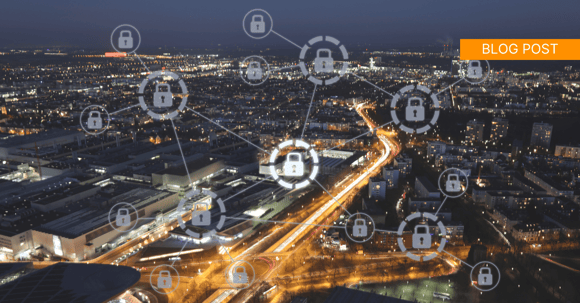Navigating the intricate world of cybersecurity can be tricky business, especially with terms like EDR and MDR flying around!
They might sound like secret codes, but in reality, they are your robust defense mechanisms against cyber predators. Curious to know how they operate and fortify your digital boundaries?
Read on to discover the essential insights and solutions you need to know about EDR, MDR, and SOC. Gain a deeper understanding of why these services are crucial and how they can help you make the right choices for your cybersecurity needs.
Ready? Let's dive in!
This blog is an excerpt of a recent webinar.
Don't want to read the article? Watch the full recording below.
Be sure to register here for the "Cybersecurity for Business Leaders" Lunch & Learn series!
Table Of Contents
- EDR/MDR/XDR 101: Unraveling the Terminology
- The Essential Role of SOCs in Enhanced Cybersecurity
- The Right Way To Shop for Security Products & Services
- Your Team of Cyber Superstars
EDR/MDR/XDR 101: Unraveling the Terminology

It’s no secret that today’s cyberattacks are evolving and sophisticated, leaving security teams with immense workloads. Many small businesses lack the resources to properly interpret copious amounts of alerts and investigate them, resulting in what’s known as “alert fatigue.”
Even when security teams have the skill and technology needed to review telemetry data and investigate threats, they still need a team of humans to keep an eye on these systems 24/7. That’s where managed detection and response comes in.
What Is Endpoint Detection and Response (EDR)?
Endpoint Detection and Response (EDR) is a cybersecurity service that protects and monitors endpoint devices such as computers and mobile devices within an organization's network against cyber threats. EDR provides continuous monitoring and consists of software installed on endpoints via agents. This software protects the host, collects data and communicated with a portal. It can be as simple as antivirus, or much more advanced. .jpg?width=1064&height=292&name=EDR%20Benefits%20(1).jpg)
Unlike EDR and SIEM, which predominantly focus on automation and alerting, MDR services incorporate vital human expertise, with seasoned professionals monitoring alerts day and night. This human element is crucial; it enables the service to meticulously weed out false positives, effectively prioritize genuine threats, and respond appropriately and promptly when necessary, ensuring a more nuanced and proactive approach to potential security incidents.
What Is Managed Detection and Response (MDR)?
MDR is a cybersecurity service that detects, analyzes, and responds to cyber threats in real-time, reducing the impact of security incidents. It is typically the service portion that provides the management of the EDT, and most often is associated with a Security Operations Center (SOC). .jpg?width=1062&height=293&name=MDR%20Benefits%20(1).jpg)
In addition to the benefits of managed EDR, a comprehensive cybersecurity solution will incorporate extended detection and response capabilities (XDR). XDR is often offered as software-as-a-service and is a direct response to the limitations that come with traditional EDR and MDR solutions that are only focused on endpoints, networks, or cloud services.
What Is Extended Detection and Response (XDR)?
Extended Detection and Response (XDR) is an integrated cybersecurity solution that autonomously collects and correlates data across various security layers—such as endpoint, network, and cloud—to detect, investigate, and respond to sophisticated cyber threats in a more coherent and contextual manner. It is often referred to as a System Information and Event Management (SIEM) solution + SOC, or simply SIEM/SOC.
XDR gathers diverse multi-domain security telemetry to enable improved, unified visibility of an organization’s entire threat surface. This approach enables cybersecurity teams to reduce their attack surface, increase return on existing investments, and meet the industry’s regulatory requirements. It’s also essential to have a SOC, or Security Operations Center, to analyze these alerts, make decisions, and take action.
The Essential Role of SOCs in Enhanced Cybersecurity
Understanding the varying degrees of management and associated costs is crucial when exploring security solutions. This ranges from unmanaged solutions to partially managed and fully managed SOCs, which play a crucial role in defining an organization's security posture.
Unmanaged Solutions: The Basic Tier
Unmanaged solutions offer basic, low-cost protection for personal machines without human intervention or advanced capabilities.
Partially Managed Solutions: The Middle Ground
Partially managed solutions, like advanced EDRs, provide centralized control for organizations to manage licenses, scans, and policies internally. While they offer decent features and easy management, they have limitations and lack human insight.
Fully Managed Solutions or SOC Solutions: The Premium Tier
Fully managed SOCs offer comprehensive security with expert assistance, ideal for startups aiming to minimize costs. They excel in immediate response, preventing and providing support during attacks.
Related Reading: How Much Should Cybersecurity Cost Your Business?
Role and Advantages of SOCs
SOCS play a crucial role in providing specialized expertise for incident response and management. With their vigilant monitoring and skilled intervention, they refine solutions, minimize false positives, implement policies, and automate processes. SOCS are the unsung heroes of comprehensive cybersecurity, offering a wide range of services and forming the essential backbone of a robust cyber defense strategy. Incorporating SOCS is a non-negotiable step for safeguarding organizations.
The Right Way To Shop for Security Products & Services

When considering cybersecurity products and services, businesses find themselves traversing a minefield of vendor-specific terminologies and offerings, making the choice between platforms and services challenging. Each vendor has a unique way of naming and marketing their services, and it's pivotal to understand what exactly is being offered, rather than getting swayed by marketing terminologies like "XDR" or "automated remediation."
Here is the right way to shop for security products and services:
#1: Do an "Apples to Apples" Comparison
When it comes to comparing cybersecurity services, it's like comparing apples to oranges. Sure, they all offer antivirus protection and data collection, but the real differences lie in how they do it and the level of protection they actually provide. Automated remediation? Well, that can be a wild card. So, it's absolutely crucial to dig deep and clarify the nitty-gritty specifics of each service.
#2: Customize Your EDR and MDR Needs
Every organization will have varied needs. While Endpoint Detection and Response (EDR) provides a foundational layer, ensuring antivirus measures and automated remediation, Managed Detection and Response (MDR) takes it a step further. MDR offers continuous monitoring, human interaction for investigations, and triage, accommodating organizations looking for more engaged and active protection.
#3: Define "Continuous Monitoring"
The term "continuous monitoring" itself is subject to interpretation. It is essential to understand whether a vendor offers genuine 24/7 monitoring, or if their definition of continuous is within the constraints of standard business hours. Clear definitions are necessary to ensure that the services align with organizational needs.
#4: Leverage Extended Detection and Response (XDR)
XDR services are being coined by several vendors and can be particularly varying. A common standard feature in XDR is environment-wide data collection, offering broader insights into potential threats. The level of customization and adaptability XDR offers is directly proportional to the amount invested.
#5: Decode the Impact of SOAR
Security Orchestration, Automation, and Response (SOAR) promises to streamline the response through automation, reducing the manual load on human analysts. However, while SOAR can be a game-changer, implementing it effectively is a common challenge. It allows the programming of responses based on specified criteria, enhancing the utility of cybersecurity tools and introducing a higher degree of automation in response strategies.
#6: Remember the Importance of Prioritization
Effective threat analysis and prioritization are vital. The inundation of alerts and triggers can be overwhelming for SOCs, and discerning between benign and malicious activities becomes pivotal. Implementing platforms that assign risk scores to alerts helps in sifting through the noise and allows analysts to focus on the most significant threats first.
The Bottom Line:
When you're on the hunt for a vendor, be a savvy shopper! Dive into their offerings, get clear on your specific needs, and don't hesitate to consult with account managers or consultants to tailor your package to perfection. Get the lowdown on the level of protection and customization each tool brings to the table. Approach with caution to avoid any misinterpretations. Make sure you fully grasp those SOC reports and understand the pros and cons of each feature. It's all about being smart and strategic when selecting the best protection options for your organization.
Your Team of Cyber Superstars
EDR, MDR, and SOC centers are like your team of cyber superstars, swooping in to save the day when it comes to handling all those pesky alerts and keeping your digital boundaries secure.
With their expert cybersecurity skills, they not only monitor alerts but also detect breaches and prevent attacks. these services are like the night watchmen of your networks, ensuring they stay safe 24/7, so your IT staff can finally catch some well-deserved shut-eye and focus on strategic initiatives.
Want to know how we can help? Reach out anytime!



